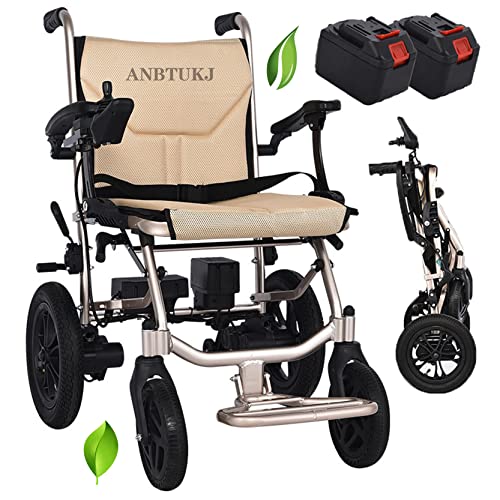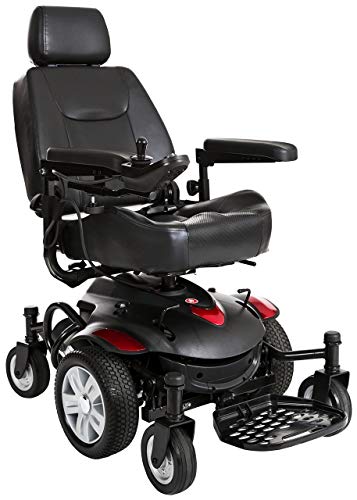An In-Depth Look Back What People Talked About Electric Wheelchair Wit…
페이지 정보

본문
 Electric Wheelchair With Joystick
Electric Wheelchair With Joystick Joysticks in power wheelchairs can significantly improve accessibility and independence. Standard joysticks might not be able to be able to accommodate the unique characteristics of hand dysfunction.
Joysticks in power wheelchairs can significantly improve accessibility and independence. Standard joysticks might not be able to be able to accommodate the unique characteristics of hand dysfunction.This study examined the effectiveness and satisfaction of customized power wheelchair Joysticks that were manufactured using 3D printing. Modified power-mobility indoor electric wheelchair driving assessment (PIDA), National Aeronautics and Space Administration task load index, and psychosocial impact of assistive devices scales were used for evaluating.
Control
The control system of a power chairs for disabled chair comprises two key components which are the joystick as well as the electronics (also known as the controller). Joysticks that are standard are placed on the left or the right side of the chair, while more complicated rehab chairs have swing-away mounts that permit the joystick to move to the middle of the seat.
The way a joystick is installed and used will play a crucial role in determining if it will be effective for a specific user. For instance, if an individual has a significant amount of tremors, then it is essential to ensure that the joystick is designed such a way that the movements do not trigger accidental activations of the chair. The standard EPW joysticks are typically proportional input devices, which respond to the level of deflection on the gimbal in order to regulate the movement of the chair (similar to an accelerator pedal or video game controller).
There are a variety of alternatives to controlling power wheelchairs, which require very little force to activate. These include switch controls sip and puff control head array systems, and chin control. While some of these specialty controls require a separate interface to connect them to the wheelchair, most are compatible with the latest generation of joysticks, which have integrated Bluetooth into their handles.
Some wheelchair joysticks are equipped with screens to display the condition of the system and to provide feedback to the users. This can be especially beneficial for those who are visually or cognitively impaired. Other advanced joysticks have the ability to control many different devices like environmental controls, and even a TV or tablet.
No matter what technology is employed, a joystick will only be as effective if the user feels easy to use. Therefore, it is essential to consider the size and location of the joystick's buttons to ensure they are easily accessible. It is also important to take into consideration the sensitivity of the joystick which can be adjusted to a range of levels depending on the individual needs of the client.
Comfort
A joystick-controlled power wheelchair has many advantages not accessible with a manual chair. They reduce fatigue caused by operational issues and allow for longer travel times over manual wheelchairs. Additionally, they can be used in areas with less space and more difficult terrain than a manual wheelchair, such as outdoor slopes or uneven surfaces. This increased independence gives users a new freedom of movement and a feeling of freedom.
A variety of different powered wheelchairs are offered with an array of options. The amount of bells and whistles available on a specific model will depend on the requirements of the user and their desires. The most commonly used features are:
The control options on an electric wheelchair with a joystick can be made to meet individual needs. This includes the type and position of the ball, knob, or handle. Some joysticks are placed at the opposite side of the dominant armrest, while others are placed in the front or back of the seat to allow easy access by an attendant. They can also be placed on the sides of the seat for those with limited shoulder range or muscles that are weak.
Other features are more personalized, such as the style and size of the joystick's display. Some are backlit, or in a color that is easier to read for those who have low vision. Other models provide additional modes that provide visual or audio cues for navigation. They also include clocks, odometers, as well as indicator of battery charge.
The ability of a joystick to move within a narrow turning radius is also important. The best models will have a narrow turning radius, making it easier to navigate obstacles and narrow spaces, such as hallways. This narrow turning radius makes it easier to navigate through public spaces and stores. This tight turning circle is especially beneficial for those with mobility issues, like cerebral palsy or other issues with mobility power chair such as multiple sclerosis, ALS and Huntington's Disease, brainstem or spinal cord injury stroke.
Safety
Power wheelchairs have been created with safety as the top priority. They have reliable braking systems that can reduce speed swiftly when the user depresses the joystick control lever. They also have anti-tip wheels at the rear to keep the chair from slipping backward.
The most popular type of joystick is a proportional control, which is similar to car accelerator pedals and video game controllers in that the more the joystick is moved away from the center the faster the wheelchair moves. These types of joysticks need proprioception and finger dexterity in order to work efficiently. A standard joystick is usually placed on the armrest but a variety of different specific controls are available that mount the controls in the middle or at the sides of the seat.
Some consumers may not have enough muscle strength to deflect a joystick handle, even with special rigging. This may be the case for those who suffer from spasticity, which can cause muscles to stiffen or waste away (atrophy). In these instances, it may be better to use a head-control device that converts the movements of the consumer's body into the required commands for the wheelchair.
Another thing to take into consideration is the size and position of the joystick's buttons. If the buttons are located too far forward or difficult to reach, it may affect the user's position and result in stress on their hands. If the joystick is placed too far back, it can be difficult to move the chair or turn the wheels.
The seatbelt must be fastened on an heavy duty electric wheelchairs wheelchair. Seatbelts must always be fastened when using an electric wheelchair. The most powerful wheelchairs can travel as fast as 8mph. Batteries should be charged frequently and, ideally, every night. This will ensure they have a longer lifespan and maintain their efficiency. It's also recommended to perform regular maintenance for your chair to ensure that all components are functioning properly.
Accessories
Joysticks are the most important component of power wheelchairs. They can be enhanced with a variety of accessories. These range from basic switches to more advanced interfaces that can be connected to communication devices or external environmental control units. A more expensive power wheelchair usually comes with a variety of controller components that can be utilised and adjusted to meet the requirements of a particular client. For example, a non-expandable controller will typically only accept the proportional joystick as an input device while an expandable controller can allow for sip and puff controls, specialty switches and head array systems. Some of the advanced controllers can operate up to two power seating actuators which can adjust the angle and position of the seat.
The most popular type of joystick used in clinics is a proportional joystick also known as a movement-sensing joystick. This kind of joystick, similar to accelerator pedals in cars and video game controllers, responds to the force applied on the stick by increasing its output (i.e. the speed of the wheelchair) the farther the stick is moved from the center. This requires a lot of dexterity as well as a strong proprioception to be able to use it effectively.
The technology used today is able to compensate for a small electric wheelchairs movements in amplitude during EPW driving. However, it's not able to detect and adjust for more severe unintentional motions, such as those caused larger amplitude tremors, or involuntary movements that are not related to conscious intent like athetosis.
The majority of wheelchairs can be customized and programmed by an expert. These parameters include changing the torque that is provided by the motor, changing the speed at which the chair moves and setting the dead zone, which is the distance within which the EPW cannot produce an output. Some controllers also allow the clinician to save backup programs. This is beneficial in an emergency situation or when the symptoms of a patient alter.
- 이전글11 Creative Ways To Write About Pragmatic Official Website 24.09.27
- 다음글11 Strategies To Completely Redesign Your Bi Fold Door Repair Near Me 24.09.27
댓글목록
등록된 댓글이 없습니다.
